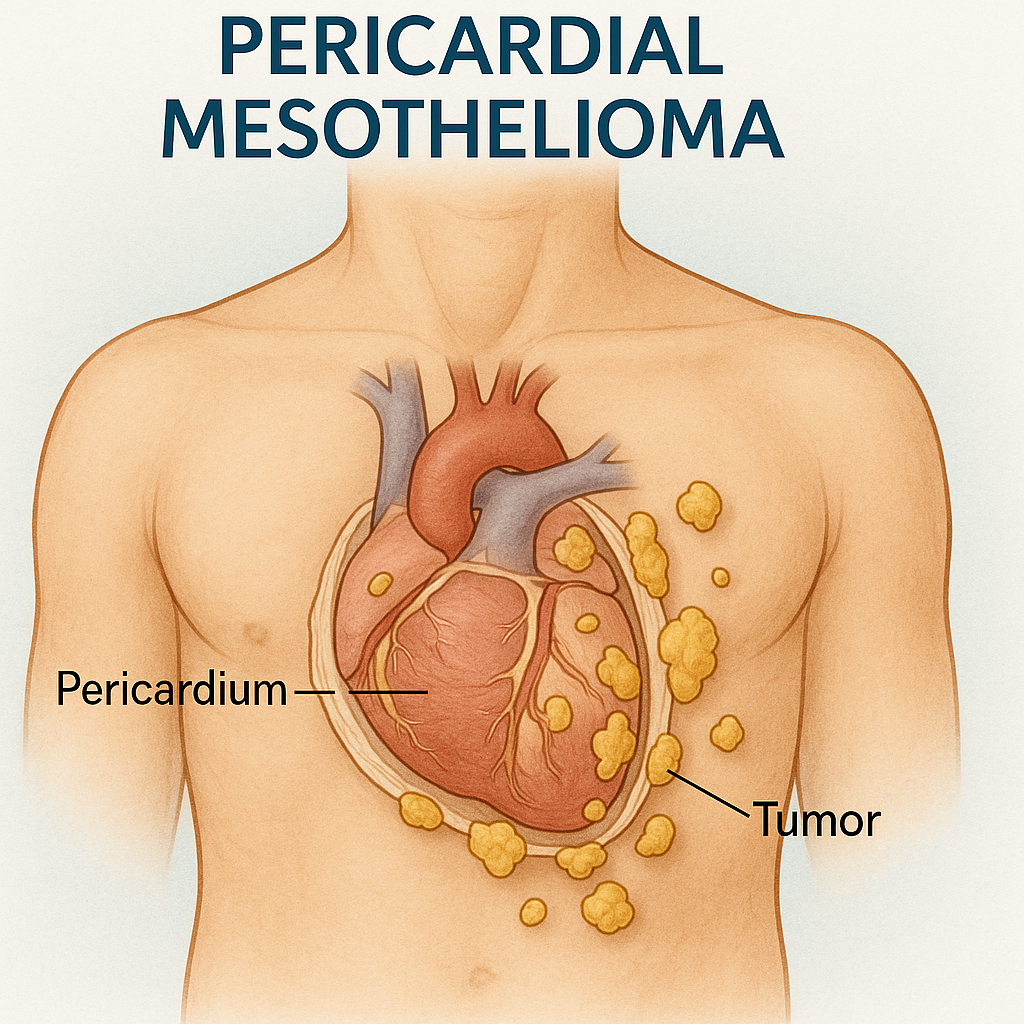Pericardial Mesothelioma is an ultra-rare and aggressive form of malignant mesothelioma that originates in the pericardium, the thin protective membrane surrounding the heart. It represents less than 1% of all mesothelioma diagnoses and is most often linked to prolonged asbestos exposure—a known carcinogen. This disease arises from mesothelial cells lining the pericardium and is characterized by rapid tumor growth, pericardial effusion (fluid buildup), and constrictive cardiac symptoms such as chest pain, shortness of breath, and arrhythmia.
Due to its anatomical location and nonspecific early symptoms, pericardial mesothelioma is frequently misdiagnosed or discovered only post-mortem. Diagnosis typically involves imaging (echocardiogram, CT, MRI) and biopsy of pericardial tissue, while treatment is limited and may include pericardiectomy, palliative chemotherapy, or radiation therapy. The prognosis is poor, with median survival ranging from 6 to 12 months.
Pericardial mesothelioma is categorized under the broader class of asbestos-related cancers and shares histological subtypes with pleural and peritoneal mesothelioma: epithelioid, sarcomatoid, and biphasic. However, its proximity to the heart makes therapeutic intervention uniquely challenging.
